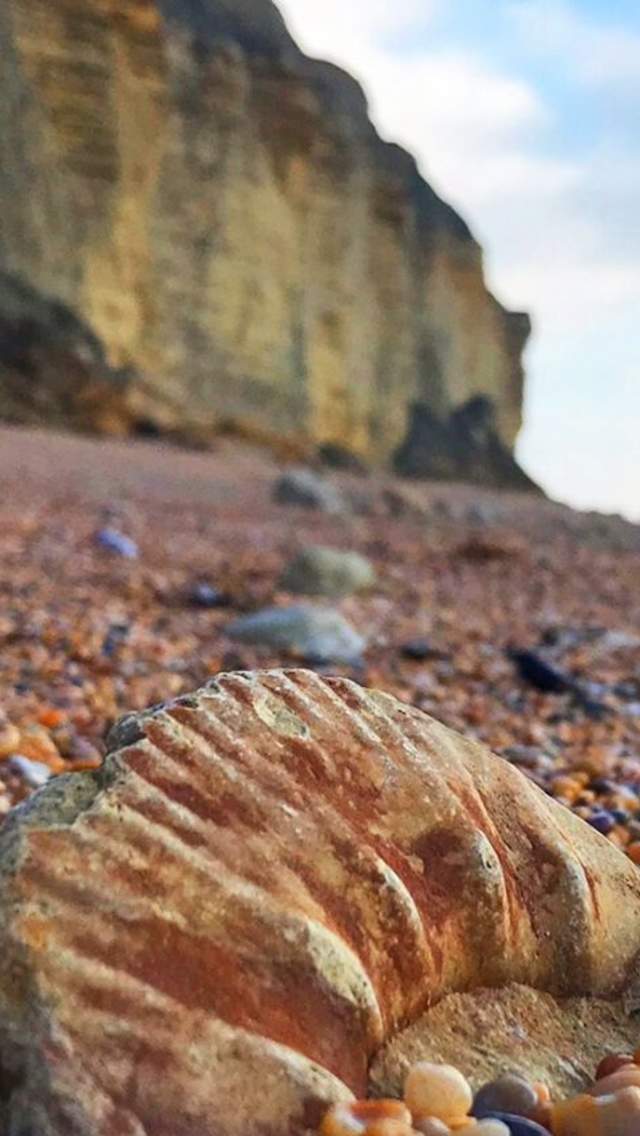Fossil Hunting on the Jurassic Coast The best place to see and hunt for fossils
Wondering where is the best place to see or hunt for fossils on the Jurassic Coast?
The rock cliffs at Charmouth and Lyme Regis contain thousands of fossils of animals that swam in the Jurassic seas. The remains that have been found along the Dorset coast since the eighteenth century represent one of the richest slices of life in Jurassic times anywhere in the world!
The best time to find fossils on the beaches at Charmouth and Lyme Regis is after a winter storm. This part of the Jurassic coastline erodes rapidly, resulting in fossils falling from landslides in the surrounding cliffs onto the beaches. Ammonite, belemnite and crinoid fossils are plentiful and easily found once you know what to look for.
The Museum of Jurassic Marine Life at Kimmeridge is home to some world firsts and the fossils on display were all collected along the local coastline by renowned fossil collector, Dr. Steve Etches MBE. If you happen to find a fossil down on the beach, why not take it up to the museum to see if it can be identified?
You can also see Dorset fossils exhibited at Dorset Museum, including the famous Weymouth Bay Pliosaur.
And if you want the real Jurassic experience, you can literally walk in the footsteps of dinosaurs at Spyway Dinosaur Footprints near Swanage, where more than 100 fossilised tracks are preserved in a flat layer of rock.
Join a fossil hunting expedition
One of the best and safest ways to hunt for fossils is to join a guided walk.
Lyme Regis Museum run their own fossil walks along Lyme Regis beach which is where the famous fossil collector Mary Anning found the first correctly identified Ichthyosaur skeleton and the first two nearly complete Plesiosaur skeletons. The museum is located where she used to live and sell her fossils from.
Visit the Charmouth Heritage Coast Centre to join a fossil hunting walk and journey through time.
Safety First
Fossils are eroded from the cliffs of the World Heritage Site and tumble onto the beaches where they can be found. But not every beach is safe, and not all fossils should be collected.
Always follow the Fossil Hunting Code before setting out on your expedition.
It's very important that you also consult tide tables before collecting fossils; it is advisable that you hunt for fossils on a falling tide to make sure you get back to your start point before the tide comes in.
Plan Your Visit
Love fossils?You'll love these...
Museum of Jurassic Marine Life - The Etches Collection
Come and visit the ‘Jewel’ in the crown of the Jurassic Coast, The Etches Collection Museum of Jurassic Marine Life situated in the village of Kimmeridge, Dorset Housing the finest single...
Dorset Museum & Art Gallery
Welcome to Dorset Museum & Art Gallery, a place to connect with 250 million years of history. From amazing archaeology, to dinosaur bones and the story of Mary Anning, the archive of Thomas Hardy...
Lyme Regis Museum
There really is something to delight and inspire everyone at Lyme Regis Museum. Enjoying a stunning seafront location on the world-famous Jurassic Coast with fantastic views over Lyme Bay,...
Spyway Dinosaur Footprints
More than 100 fossilised dinosaur tracks are preserved in a flat layer of rock in a quarry near Langton Matravers. The tracks date back to 140 million years ago when this area was covered in...
Charmouth Heritage Coast Centre
NEW: Visit Raffle, a rare 3D plesiosaur skeleton. Named after Raffle the dog, who found the fossil whilst walking the beach with owner Tracey Barclay, this unique Jurassic marine reptile is one of the...
We  Mary Anning
Mary Anning
View All
Mary Anning Comes Home
Visit the statue dedicated to the pioneering palaeontologist Mary Anning in her hometown of Lyme...










